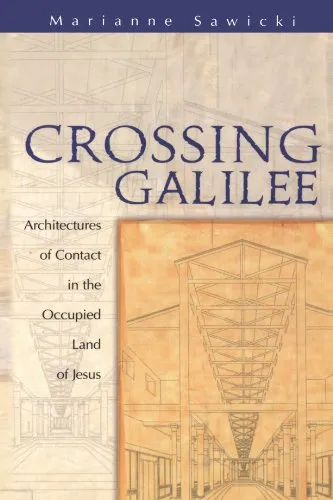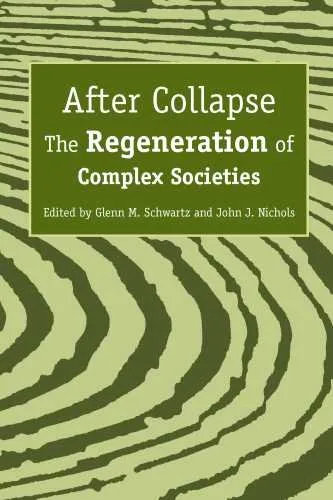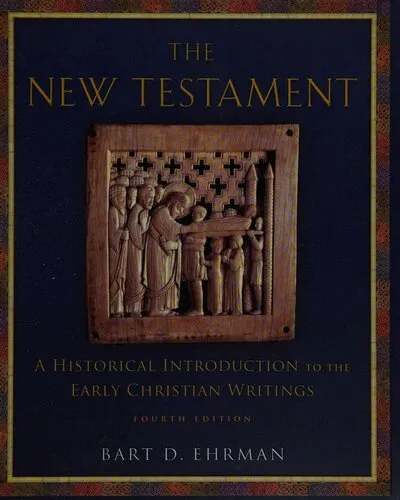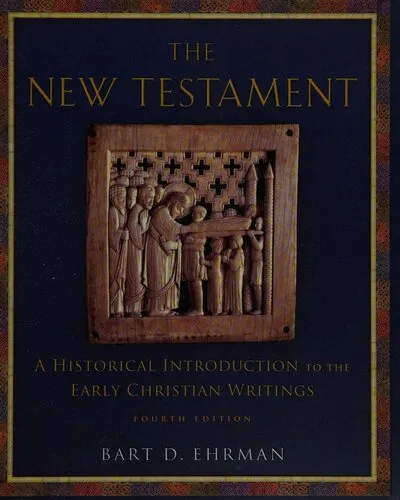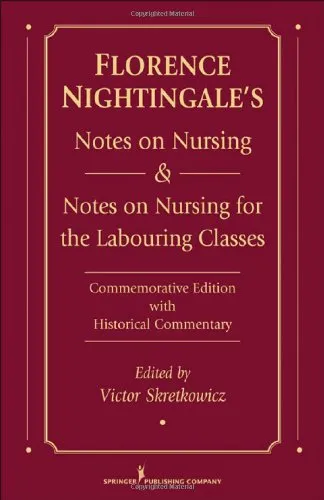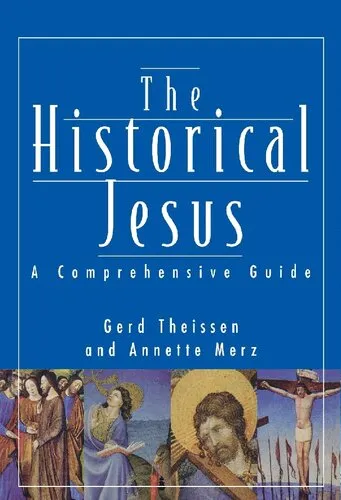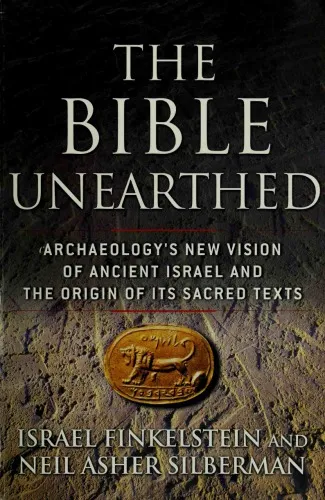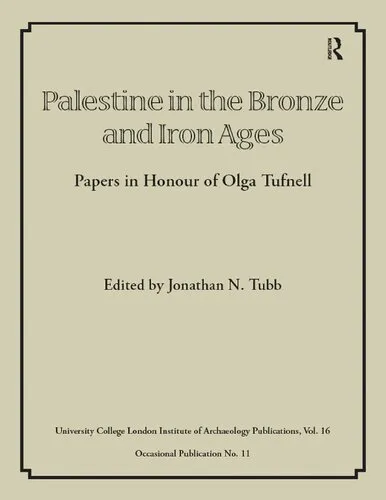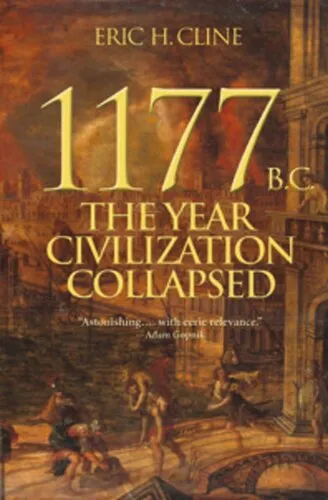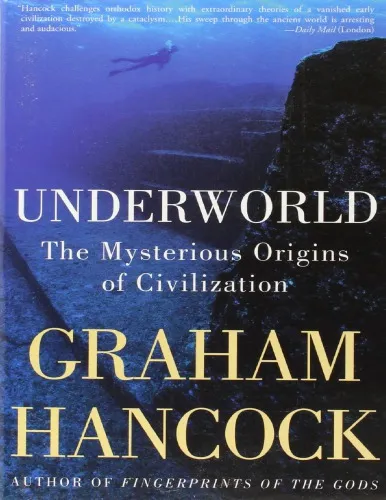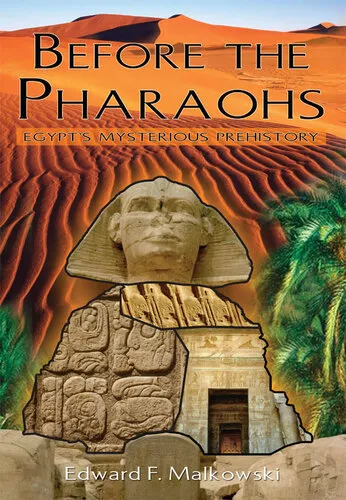The Archaeology of the Holy Land: From the Destruction of Solomon's Temple to the Muslim Conquest
4.5
بر اساس نظر کاربران

شما میتونید سوالاتتون در باره کتاب رو از هوش مصنوعیش بعد از ورود بپرسید
هر دانلود یا پرسش از هوش مصنوعی 2 امتیاز لازم دارد، برای بدست آوردن امتیاز رایگان، به صفحه ی راهنمای امتیازات سر بزنید و یک سری کار ارزشمند انجام بدینکتاب های مرتبط:
معرفی کتاب
کتاب 'The Archaeology of the Holy Land: From the Destruction of Solomon's Temple to the Muslim Conquest' نوشته جودی مگنس یک بررسی جامع و دقیق از باستانشناسی اراضی مقدس از دوران تخریب معبد سلیمان تا فتوحات اسلامی است. این کتاب با استفاده از یافتههای باستانشناسی و متون تاریخی، به تحلیل و بازشناسی این منطقه تاریخی و تحولات فرهنگی، اجتماعی و سیاسی آن میپردازد.
خلاصهای از کتاب
کتاب به چهار دوره زمانی تقسیم میشود که به ترتیب از تخریب معبد سلیمان در قرن ششم قبل از میلاد آغاز میشود و تا فتوحات اسلامی در قرن هفتم میلادی ادامه مییابد. هر بخش شامل تحلیلهای روشنگرانهای از منظرهای باستانشناسی، تاریخی و فرهنگی است که با جزئیات کامل و نیز تصاویر و نقشههای مرتبط، خواننده را در درک عمیقتری از اراضی مقدس یاری میدهد.
نکات کلیدی
- بررسی اجمالی از توسعه فرهنگی و دینی اراضی مقدس در دورههای مختلف تاریخی.
- نقش کلیدی تحلیل باستانشناسی در تبیین موقعیتهای تاریخی و اجتماعی.
- ارتباط میان کشفیات باستانی و متون تاریخی برای بازسازی دقیقتر وقایع رخ داده.
- تأثیرات متقابل فرهنگی میان ساکنان مختلف این منطقه از جمله یهودیان، مسیحیان و مسلمانان.
نقلقولهای مشهور از کتاب
یکی از نقلقولهای معروف در کتاب جایی است که مگنس اشاره میکند: "برای فهم تاریخ اراضی مقدس، باید به باستانشناسی به عنوان راهی برای بازسازی گذشته و نیز به متون تاریخی به عنوان راهنماهایی برای تفسیر یافتههای باستانشناختی اعتماد کرد."
چرا این کتاب مهم است
این کتاب نه تنها به دانشجویان و علاقهمندان به باستانشناسی و تاریخ اراضی مقدس کمک میکند تا درک دقیقتری از این منطقه پیچیده به دست آورند، بلکه به محققان و استادان دانشگاه نیز ابزاری علمی و معتبر برای پژوهشهای بیشتر ارائه میدهد. همچنین، تلاش مگنس در ترکیب دقیق اطلاعات باستانشناسی و دادههای تاریخی به ایجاد تصویری کلی و دقیق از تحولات فرهنگی و دینی اراضی مقدس یاری میکند.
Introduction to The Archaeology of the Holy Land: From the Destruction of Solomon's Temple to the Muslim Conquest
The Holy Land, a region soaked in millennia of history, spirituality, and cultural evolution, offers a profound lens into the ancient world. My book, "The Archaeology of the Holy Land: From the Destruction of Solomon's Temple to the Muslim Conquest," seeks to explore this rich tapestry by delving into the archaeological narratives that unearth the past. This introduction lays the groundwork for understanding the depths and dynamics captured within these pages.
Summary of the Book
Spanning nearly a thousand years, this book provides a scholarly examination of the major archaeological and historical developments in the Holy Land. Beginning with the destruction of Solomon's Temple in 586 BCE, it traverses through the rise and fall of successive empires, cultural exchanges, and religious transformations, culminating in the Muslim conquest of the early 7th century CE. By integrating archaeological evidence with historical sources, the book offers a narrative that is both educational and engaging, setting it apart from simple historical recounts.
This extensive survey introduces readers to key sites and artifacts that have been excavated over the years. Through the investigation of these findings, the book not only reconstructs the region’s turbulent past but also highlights the interactions among the various peoples who have inhabited it. It emphasizes the continuity and changes that define the Holy Land and how these have been influenced by geographic, political, and religious diversity.
Key Takeaways
- The Holy Land is a focal point for understanding ancient civilizations and their interactions over a millennium.
- Archaeological evidence plays a critical role in reconstructing historical narratives and complements written records.
- Cultural and religious transformations in the region are deeply interconnected and reflect broader socio-political changes.
- The work highlights the significance of interdisciplinary approaches in uncovering the complexities of historical events and trends.
Famous Quotes from the Book
Throughout the book, various insights provide depth and perspective on the historical and archaeological narratives:
"Every layer of soil turned in the Holy Land reveals not just artifacts, but the whispers of history that challenge our understanding of the past."
"The stones of Jerusalem, the pottery of Jericho, the scrolls of Qumran – each bears witness to a history that is as much ours as it is theirs."
Why This Book Matters
"The Archaeology of the Holy Land: From the Destruction of Solomon's Temple to the Muslim Conquest" is an essential read for both scholars and enthusiasts interested in the ancient Near East. The book is significant in that it provides a comprehensive, integrative view of the numerous and varied influences that have shaped one of the world's most historically significant regions.
In an era where the past continuously informs the present, understanding the archaeological underpinnings of the Holy Land offers critical insights into current cultural and political landscapes. This book not only serves as a detailed guide through the archaeological journey of the region but also as a reminder of the enduring legacy of the past that continues to impact global civilization.
دانلود رایگان مستقیم
شما میتونید سوالاتتون در باره کتاب رو از هوش مصنوعیش بعد از ورود بپرسید
دسترسی به کتابها از طریق پلتفرمهای قانونی و کتابخانههای عمومی نه تنها از حقوق نویسندگان و ناشران حمایت میکند، بلکه به پایداری فرهنگ کتابخوانی نیز کمک میرساند. پیش از دانلود، لحظهای به بررسی این گزینهها فکر کنید.
این کتاب رو در پلتفرم های دیگه ببینید
WorldCat به شما کمک میکنه تا کتاب ها رو در کتابخانه های سراسر دنیا پیدا کنید
امتیازها، نظرات تخصصی و صحبت ها درباره کتاب را در Goodreads ببینید
کتابهای کمیاب یا دست دوم را در AbeBooks پیدا کنید و بخرید
1392
بازدید4.5
امتیاز0
نظر98%
رضایتنظرات:
4.5
بر اساس 0 نظر کاربران
Questions & Answers
Ask questions about this book or help others by answering
No questions yet. Be the first to ask!


